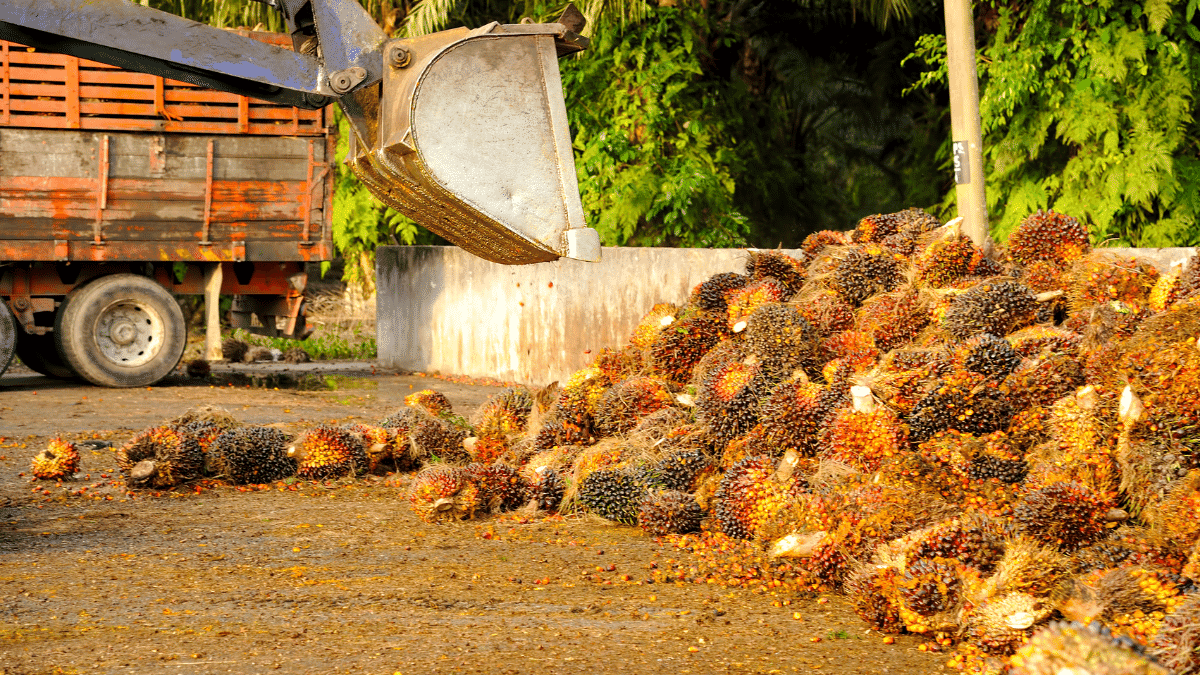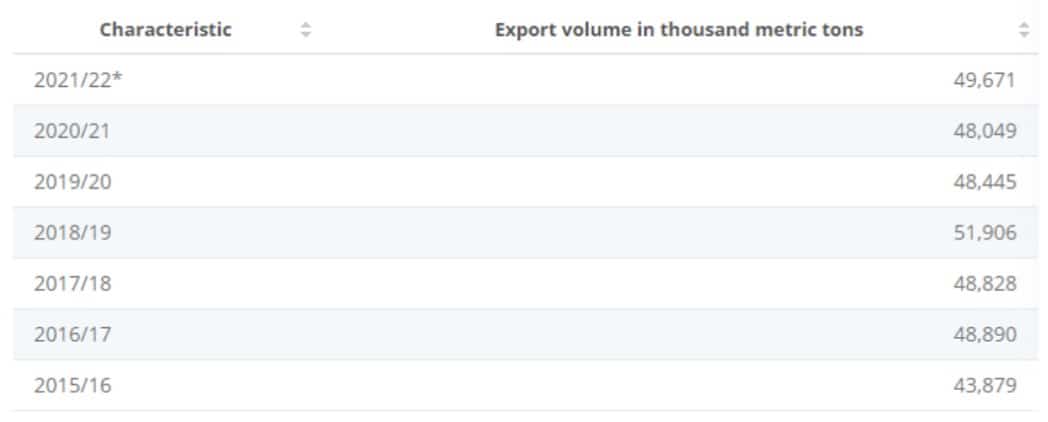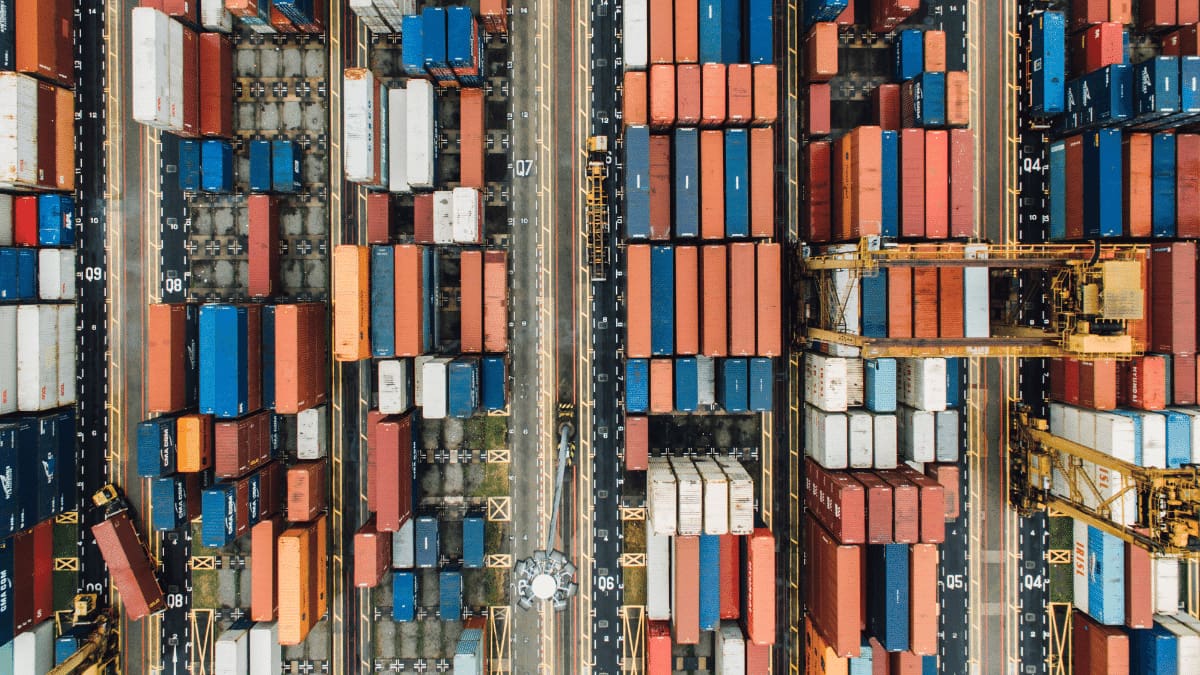Palm oil is increasingly dominating the global vegetable oil market, accounting for 60% of global trade. As many industries use palm oil as one of the product ingredients, palm oil comes as an essential commodity. Thus, global production and demand for palm oil are rapidly increasing. In order to meet global demand for palm oil, palm oil export has emerged as a significant market segment. As a part of the logistic system, exporting palm oil often requires many integrations to monitor the process. Therefore, logistics automation software is necessary.
The right logistics management software minimizes lead times with automation. Palm oil export keeps growing as an industry. Many countries, notably the United States, intend to increase sustainable biodiesel production. Consequently, this will significantly increase the demand for edible oils, such as palm oil. Therefore, logistics management software can help you achieve smoother shipment processes to meet increasing demand.
Benefits of Palm Oil
Palm oil is the cheapest and most accessible vegetable oil. Oil palm plantations produce an average of around three tons per hectare each year, while other oil-producing crops generate less than one tonne of crude oil per hectare. Moreover, over half of all product lines in a typical supermarket use palm oil. This means that you can find palm oil in everything from ice cream to shampoo, and the global per capita consumption reached 7.7 kg in 2015. Palm oil is incredibly adaptable, has lifted millions out of poverty, and can be ecologically friendly if you handle them properly. Here are the benefits of palm oil and why it is widely used.
Efficiency
Speaking of production, oil palms are far more efficient than any other oil-producing crops. A single hectare of land can yield 4.17 metric tons of palm oil per year, compared to 0.56 tons of sunflower oil, 0.39 tons of soybean oil, and 0.16 tons of groundnut oil. In fact, oil palm occupied only 7% of the world’s oil growing area while accounting for 32% of production in 2016.
As a result, palm oil needs substantially less land to meet the demand for vegetable oil, whereas other crops require at least five times the land to produce the same volume. Oil palms also utilize less fertilizer, insecticides, and energy. According to The Guardian, producing a ton of soybean requires 315kg of fertilizer, 29kg of pesticides, and 2.9 gigajoules of energy. On the other hand, producing the same amount of palm oil requires only 47kg of fertilizer, 2kg of pesticides, and 0.5 gigajoules of power.
Economic benefits
The palm oil sector has prospered millions of people in Indonesia and Malaysia, which account for roughly 85% of global production. Palm oil plantations have created millions of well-paying employment, and tens of thousands of smallholder farmers now own their land. Additionally, the palm oil industry in Indonesia accounts for 1.6% of GDP and employs 4.5 million people. Because palm oil acts as an export commodity, the business generates more than $18 billion in foreign exchange yearly, making it the country’s single most significant contributor.
Versatility
Palm oil has a long shelf life and remains solid at room temperature, making it an excellent ingredient in a wide range of meals. It soared in popularity during the 1990s as producers sought healthier alternatives to hydrogenated and partially hydrogenated fats. Palm oil, like other natural seed oils, contains less than 1% trans fats and can play a significant part in a healthier diet.
Moreover, palm oil’s high melting point makes it a suitable replacement for animal fats in items such as spreads and baked goods since it is stable at high temperatures. Other than that, palm oil is also one of the ingredients to make sodium lauryl sulfate, which acts as a foaming agent in many body care products, like soap and toothpaste. Because of its high-fat content, it is also an excellent emulsifier for moisturizers, cosmetics, and even candles.
Largest Exporter of Palm Oil

According to Statista, Indonesia will be the largest exporter of palm oil worldwide in the year 2021-2022. The data is based on the volume of palm oil the country exports. During this period, Indonesia was the top palm oil-exporting country, with an export volume of about 28 million metric tons. Eventually, Malaysia came in second place with around 16.2 million metric tons in palm oil exports.
In addition, according to the Indonesian Palm Oil Association (GAPKI), Indonesia exported 34 million tonnes of palm oil products in 2020, generating approximately $15 billion in revenue. Needless to say, it impacted many countries when Indonesia announced its ban on palm oil export in April 2022. However, the Indonesian government lifted the ban in May 2022. The ban-lifting has resulted in a wave of relief for Indonesian palm oil farmers. Accordingly, the lift on the palm oil ban continues to push down cooking oil prices.
Export Volume of Palm Oil

According to the statistic that shows the export volume of palm oil worldwide from 2015/2016 to 2020/2021, the volume of global palm oil exports reached over 48 million metric tons in 2020/2021. This amount forecasts a decrease from around 48.45 million metric tons the year before.
Biggest Importer of Palm Oil

The top importing countries of palm oil are India, China, Pakistan, and Spain. India is the world’s largest importer of palm oil, which accounted for about USD 9748 million in 2017. India, the biggest importer of palm oil worldwide, relies on Indonesia to fulfill nearly half of its palm oil necessities of around 700 thousand tonnes each month. In March this year, India imported 207,362 tonnes of palm oil from Indonesia.
Before Indonesia announced restrictions on palm oil export, industry officials expected India’s palm oil imports in May to rise above 650.000 tonnes. Still, since Indonesia implemented the ban policy, they expect more than 600,000 tonnes of shipments. Indonesia and Malaysia are the leading palm oil suppliers, with India as the biggest importer. However, during the ban period, India tried to source more palm oil from other countries, such as Thailand and Papua New Guinea.
6 Risks in Exports
Due to the effect of the economic downturn, tariffs, and trade on the supply chain and logistics, much discussion has centered on importing and exporting goods and services. However, exporters must be aware of the potential risks when attempting to capture the trade potential of foreign clients and customers. From leaving the port to breaking into a new market, the trade of manufactured goods faces various logistical and conceptual obstacles. Therefore, companies that choose to export their products may face several obstacles. Here are a few challenges in exporting goods and their corresponding solution.
Unclear logistical planning for business
Suppose you are a Singaporean company seeking to export refined petroleum to the Chinese city of Shanghai. In addition to ensuring that the shipment departs and arrives on time and in the correct location, with handlers present to assume responsibility for the goods once they reach China soil, you must also account for the possibility of damage, loss, and theft.
Therefore, solid logistical planning is essential for ensuring a smooth beginning. You need a logistics partner familiar with local laws and regulations to assist you in mitigating potential risks. One of the ways to achieve precise and effective logistical planning is by implementing a robust logistics ERP system. This software provides real-time tracking for couriers and vehicles, quotations, route planning, and many more that will guarantee your effectiveness.
Lack of experience in border and control and distribution law

Customs clearance, unpredicted tariffs, and a check for compliance with local rules and regulations are just a few potential issues that may arise before the goods enter the industry. Therefore, you can employ trade compliance and customs law consultants to facilitate the efficient and secure movement of goods across international borders. Additionally, you can avoid the nightmare of having your exports delayed at customs by exercising good judgment.
Moreover, the country of destination may choose the distribution method for you. Direct exporting, licensing, and partnerships or joint ventures are the three most common distribution methods. For instance, the trade market overview of India restricts foreign ownership and investment in specific industries. Other nations have protectionist laws, such as “buy local” mandates. This encourages foreign companies to form partnerships with domestic firms or manufacture in-country. Thus, you should choose your in-country partners with care. Ensure that your partners comprehend and adhere to the laws of your country.
Understand each market’s legal requirements
After devising a comprehensive payment plan and arranging how customers receive your shipment, numerous things could happen. For instance, a dispute over exchange and interest rate fluctuations arises, or a worst-case scenario where a customer refuses to pay. Due to these reasons, a legal team familiar with local customs is not merely recommended but essential.
Consequently, business plans are not “one-size-fits-all” documents. You have to tailor them to meet each market. Even countries as extensive and diverse as China and India may require regional plans. Therefore, specific factors to consider include:
- Infrastructure: plan for unanticipated costs or shortages in countries with inadequate transportation or information technology infrastructures.
- Trading obstacles: examine the effect of tariffs and taxes on exports as obstacles to trade. Some nations have special trade zones and other avenues for reducing red tape.
- Financing: domestic banks may be hesitant to finance an international venture, but the US Export-Import Bank may be able to assist you.
Financial risk because of currency exchange
Although the pricing of export commodities can be more predictable, exchange rates pose risks that can result in a loss of profits or earnings. Even while a country with more stable enterprises is likely to have more stable or predictable financial systems, there is still a high risk to consider when exporting from such a nation. Manufacturers should consider the evolution of the currency exchange rate, which might be unpredictable due to economic and political events.
Managing finances is a core area in businesses. Therefore, you need a comprehensive accounting system to streamline managing your finances. With proper accounting, you can minimize manual and time-consuming financing processes. As a result, you can minimize financial risk by conducting a real-time and accurate report. The complete logistics ERP software comes with accounting modules to help you seamlessly track profit and loss per department.
Not knowing if your product will sell
International expansion can be a helpful method for extending the life of aging product types and compensating for seasonal fluctuations in your country. However, you must ensure that there is room in the market for your products. Additionally, ensure that consumers will be attentive to them. You must also consider the cultural nuances, local preferences, and current trends of the destination country to have a successful export product.
A decent idea and broad market research are insufficient. You also need marketing and distribution agents to provide specialist advice, from packaging design to locating the optimal distribution hub. Furthermore, utilizing the right marketing strategy for your product is a helpful approach to gaining market attention. Additionally, you can enhance relationships with clients, target the right segment, and optimize your marketing efforts with complete marketing automation software.
Not having a diverse workforce
Although your product has arrived at its final destination, the game is still not complete. Once the goods begin circulating throughout the region, issues such as defective equipment charges may occur. Doing business with foreign nations takes a certain level of confidence. Therefore, you should find regional specialists and consultants. Investing in a diverse and experienced workforce is better to protect your competitive edge in an international market.
Conclusion
Palm oil is a crucial commodity due to its numerous economic benefits. The demand for oil palm will never diminish, mainly because it serves the needs of many sectors. Consequently, palm oil export is one of the most rapidly expanding and promising industry activities. However, exporting goods can present several obstacles, as you must deal with various factors that can spiral out of control if you manage them manually. This is when a solid logistics ERP system is helpful.
Warning: Undefined array key "med" in /home/hashmicr/public_html/blog/wp-content/plugins/insert-headers-and-footers/includes/class-wpcode-snippet-execute.php(419) : eval()'d code on line 281

HashMicro’s complete logistics ERP software provides the best features to help you automate many parts of your logistics operations. Accordingly, you will increase customer satisfaction with faster shipments. HashMicro’s logistics ERP software integrates various modules, allowing you to streamline all parts of your export and import business. You can get real-time and accurate reports on courier tracking, financial data, and staff performance. If you want to grow your business, implement HashMicro’s logistics software now and get the price scheme calculations!














